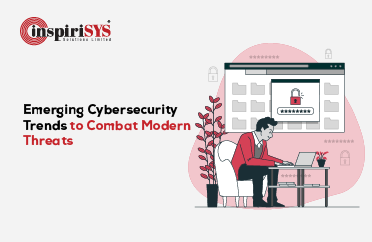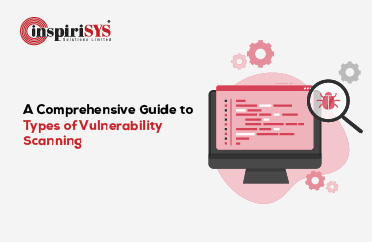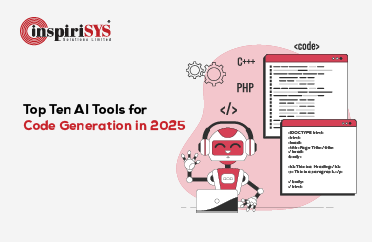Cloud is transforming the way organizations deploy, manage, and support business-critical applications. Organizations must support applications round the clock to ensure stability, reliability, and safety. Today, enterprises are building cloud-native applications to rapidly test and deploy new services. The tremendous growth of these cloud-native applications pushes organizations to the technology tipping point and enables them to adopt agile development methods. They realize that although the public cloud delivers business benefits, it is not the right solution that best fits all workloads. Migrating applications to a public cloud can result in significant cost and effort. In some cases, it requires application recoding, reconfiguration, refactoring, and reintegration. On the other side, the private cloud offers many benefits of public cloud including resource pooling, rapid scaling, and automation.
Private cloud empowers organizations with more control and flexibility. So, private cloud is ideal for larger organizations with stringent data policy, governance, regulatory, and compliance mandates. A private cloud can satisfy the needs of both enterprise and cloud-native applications while a public cloud is designed primarily to support cloud-native applications. Additionally, with the private cloud, enterprises can easily customize the compute, storage, and network components to best suit the specific requirements.
Key Characteristics of Enterprise Cloud

Web Architecture
An enterprise cloud should have building blocks of interchangeable components that should be interconnected to create a large number of web services. This architecture allows multiple infrastructure components to seamlessly communicate with each other. This type of infrastructure can be broken down into multiple component web services so that each of them can be automated, deployed, modified, and redeployed independently.
Suite of APIs
An enterprise cloud should have a comprehensive set of state-of-the-art web-based APIs. It includes Representational State Transfer (REST) which provides programmatic access to a huge collection of web services. Modern APIs that are designed for the cloud are open and flexible. These APIs are easy to assemble, integrate, break down, reconfigure, and connect to other web services.
Abstraction
An enterprise cloud should support virtual machines and container level operations. This ability offers to the program at the level of individual applications. It allows performance isolation at a granular level and further makes it possible to ensure the performance of applications with automatic and policy-based quality of service. The abstraction is a crucial requirement for automating operational and technical processes.
[Case Study] AWS Cloud Solution for Web Application
Pros of an Enterprise Cloud
Autonomic Operations
To ensure performance and reliability, the compute, storage, and networking components should work in concert. It is a paramount challenge to manually manage the discrete units of computing such as virtual machines and their orchestrations. Conventional storage systems bring tremendous management baggage. The lack of granularity creates challenges including inflexible assignment of performance and capacity, over-provisioning to ensure peak performance needs, and manual processes to reclaim space.
Automation and Orchestration
Automation and orchestration are the two critical factors that drive efficiency in cloud operations. It is impossible to have human interventions to maintain hundreds of thousands or even millions of virtual machines and containers to optimize the workloads or to provision a new workload at the speed of business. Automation allows a task to be performed without human intervention. Orchestration is the coordination of automated tasks to accomplish a defined workflow. In a web services architecture, the tasks are performed at the virtual machine or virtual disk level. Hence, they can be easily mapped to cloud services. These tasks cover advanced features for data protection, synchronization and quality of service. With enterprise cloud, workflows are simple and reliable, so organizations can include value-added storage services for self-service.
[Case Study] Web Application Hosting in AWS Cloud
Real-time Analytics
Many virtual environments are connected to traditional storage architectures. So, they suffer significant shortcomings in finding virtual machine and container behaviours. This creates barriers to real-time analytics. The resource pool structure of conventional storage is not intrinsic for virtual machines and containers to make granular real-time monitoring that helps to gain visibility on every workload and visibility into cloud latency. It is impossible to optimize an enterprise cloud without the monitoring visibility to support real-time cloud analytics.
The visibility enables real-time and predictive analytics for the enterprise cloud. These analytics provide real-time actionable insights at the virtual machine or container level to identify factors that could contribute to improve latency, performance, or downtime. Rapid resolution of these factors offers a real-time view of operations in the cloud virtual infrastructure. Further, levering data related to time and rules to generate future behaviour predictions can greatly help to identify trends and future capacity and performance requirements.
Self-Service
The major advantage of enterprise cloud is that it doesn’t need a cloud expert to control and manage the cloud footprints. Individual business units and DevOps teams can have tremendous control over the cloud. Development and operations teams working in separate silos in the traditional development processes can deploy or modify infrastructure in just days or weeks in support of new development initiatives. DevOps is the major driver of innovation within organizations today. It empowers developers with self-service to create, modify, and shut down an infrastructure environment in minutes.
DevOps teams must have access to real-time production data and the changes in the master virtual machine or container should be instantly replicated across all the copies. This empowers them to be successful. This is specifically significant for teams that rely on agile development processes that are built around a stream of smaller development efforts.
Widespread access to real-time data in an enterprise cloud, without disrupting the production environment, increases the productivity of the DevOps teams. Without the availability of relevant tools in the cloud to provide real-time access and consistency across workload copies, it is a herculean effort for the developers.
Connect with our Enterprise Cloud Expert











